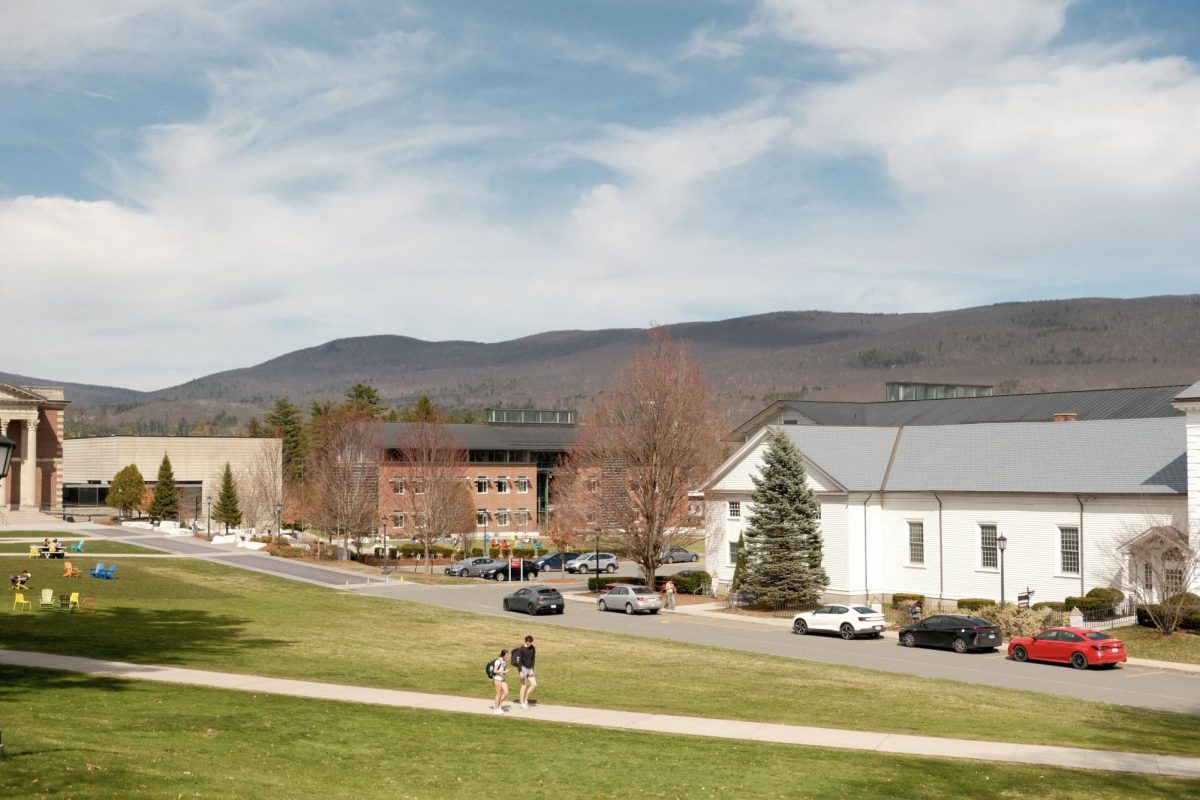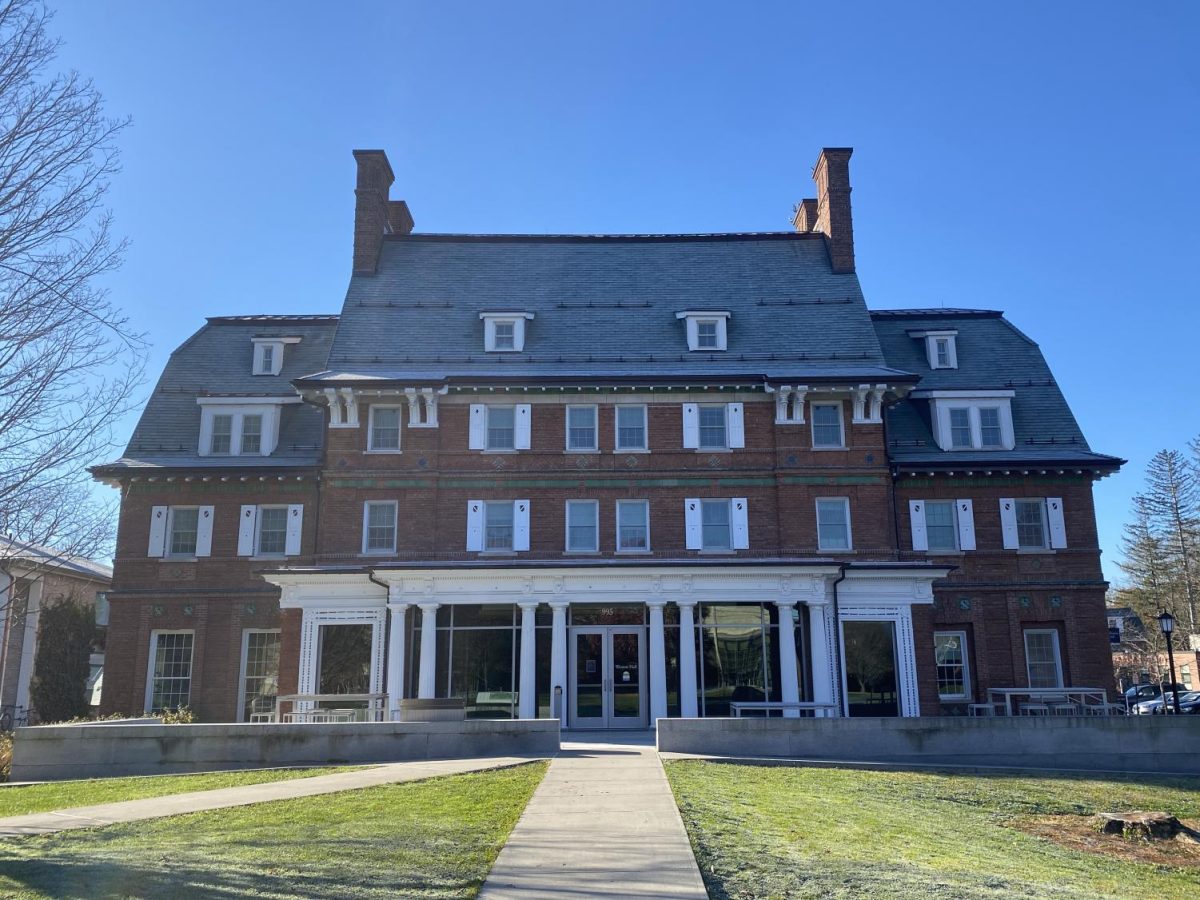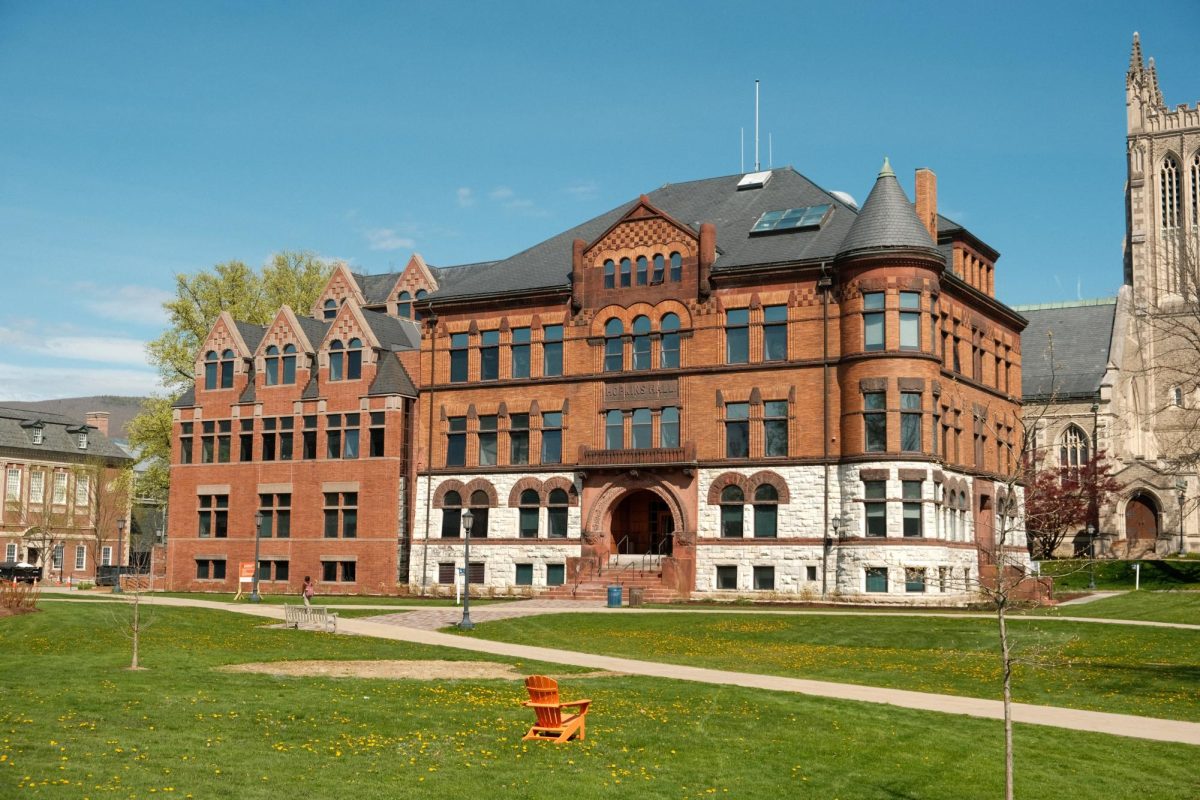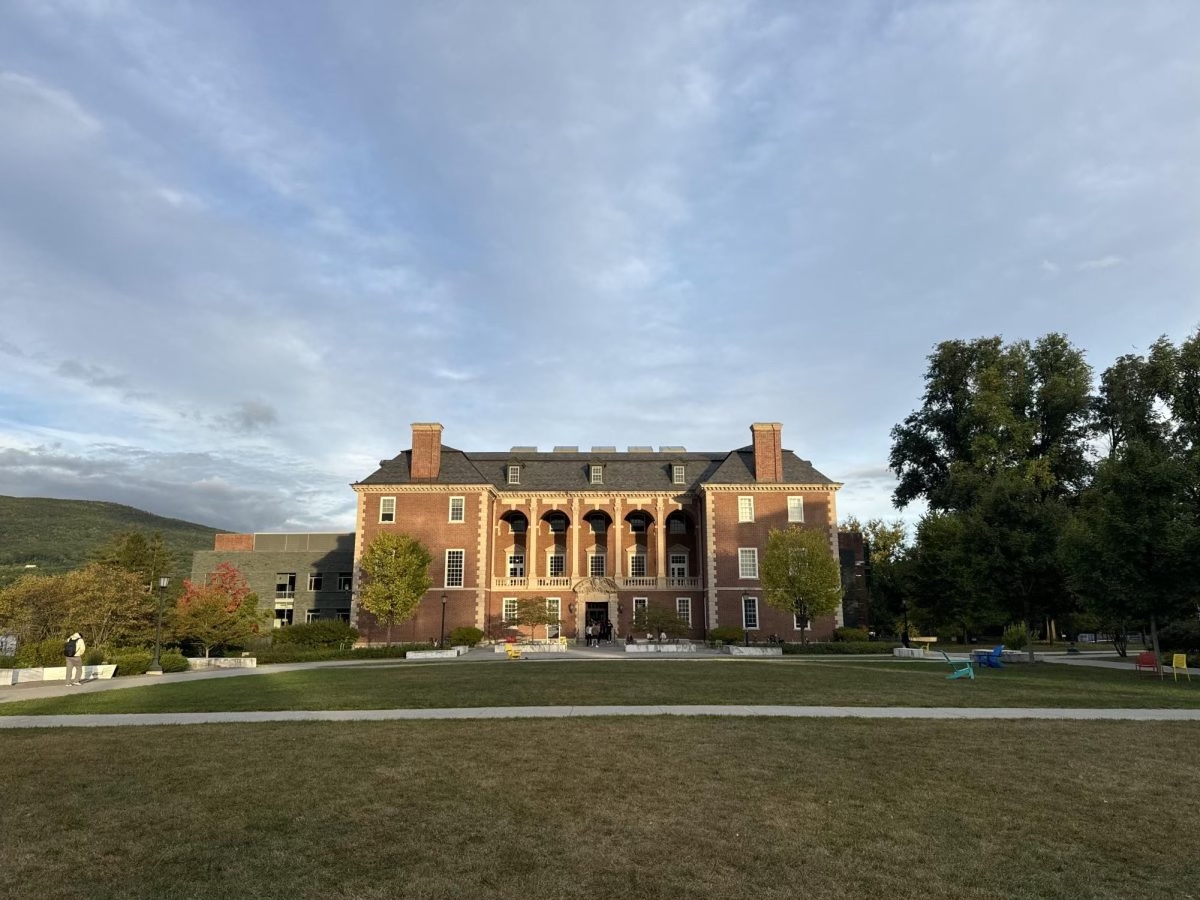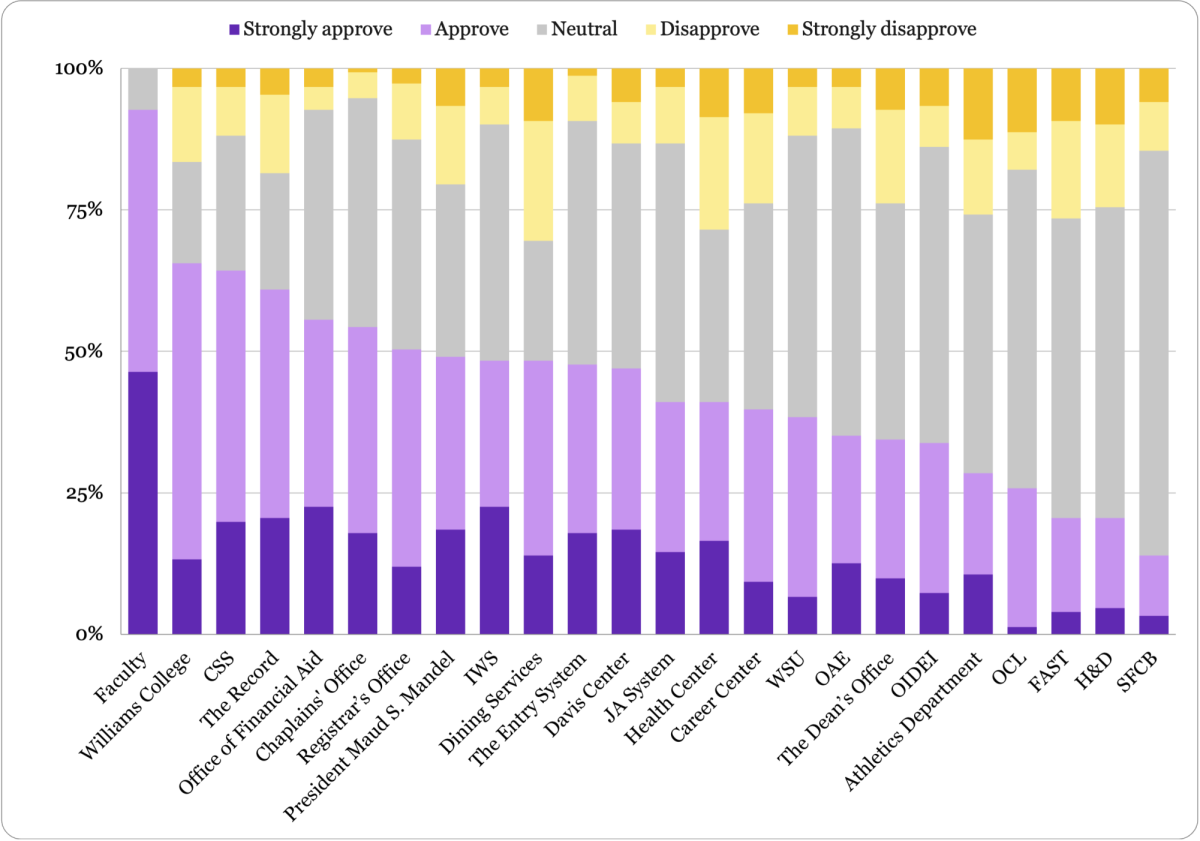The College should take steps to rectify past and current colonial displacement
November 30, 2022
This Thanksgiving season, it is important that we acknowledge the College’s role in the dispossession of land and history for the Stockbridge-Munsee Mohican tribe and the majority-Black community of White Oaks. Members of the College community executed these displacements with systemic precision, following a formula that I break down below.
Step 1: Find and exploit natural resources.
One of the resources that colonizers stole from the Stockbridge-Munsee Mohicans was the land itself. The first settlers in the Berkshires sought to maximize land and wealth accumulation by logging white oak trees (few of which remain today), building railroads, and milling — this is the legacy that remains to this day, both in the physical landscape of our surroundings and in the mentality of the College that fails to address rampant historical and present exploitation.
Founded by self-emancipated and formerly enslaved people, the community of White Oaks was established on land stolen by white settler colonizers. A railroad was built cutting through the town, bisecting White Oaks and leading to its nickname “the other side of the tracks.” This process is called partitioning, and it leads to purposeful under-development as explored in texts by historian Walter Rodney.
In the case of Ishmael Titus, a Revolutionary War hero, he was exploited and robbed of his humanity. Titus was born into enslavement, which relied on the treatment of people as resources for exploitation. Titus’ enslaver enlisted him in the war to avoid fighting, forcing him to fight for a nation that didn’t believe in his right to be a human.
Step 2: Use the oppressor’s toolkit (religion, racist rhetoric, legal action, physical violence, and intimidation) to strip people of power and place.
To displace the Stockbridge-Munsee Mohican community, colonizers employed fancy legal footwork, debt entrapment, and religious rhetoric as justification. Ephraim Williams Jr., founder of the College, was among the most prominent and brazen of the land-motivated colonizers. At one point, Ephraim Williams built a mill on land he knew belonged to the Stockbridge-Munsee, but the courts decided it would be “inconvenient” for him to give it up, and he was allowed to keep it. Indeed, English families were encouraged to encroach on the territory of the Stockbridge-Munsee Mohican community, with hopes that they could “civilize” and “Christianize” them.
Colonizers also attempted to Christianize the White Oaks community. Albert Hopkins, a prominent professor and alum at the College, took a special interest in White Oaks, describing it as a “waste place” before vowing to establish the White Oaks Chapel. The White Oaks Chapel even accepted a Ku Klux Klan (KKK) payment of $75 — a thank-you for the church allowing the KKK to host their meetings there. This intentional land theft through intimidation and creation of hostile surrounding area led to the dissolution of the Black community in White Oaks, who sought safety elsewhere.
Ishmael Titus was personally dispossessed, in this case of his earned compensation, his feeling of safety, and his story. The first of these was denied to him by the Honorable William P. Walker, County Judge of the Berkshires and member of the 1824 Williams College Board of Trustees.
Step 3: Establish a College community that memorializes the actions of racist oppressors.
Ephraim Williams, despite his role in dispossessing the Stockbridge-Munsee Mohican community, has a college named after him. Ephraim Williams was also a known enslaver of at least five Black people (his poor record-keeping leaves ambiguity about whether he enslaved more). His name, attached to the College, means that we still carry this legacy of extraction and genocide.
The Hopkins family, instrumental in the destruction of the White Oaks community, is heavily memorialized on campus: Hopkins Hall, Hopkins Forest, Hopkins Mountain, and Hopkins Trail are all named after them. Even Mission Park and Mission Park Drive are related to missionary work influenced by the Hopkins.
As Step 4, which has not been taken, I propose beginning to make amends for the wronged communities.
Step 4: Introduce scholarships and professorships as redistributive efforts toward justice.
On Oct. 26, Mirabai Dyson ’24 wrote an op-ed in the Record advocating for the creation of a scholarship and outreach program to Stockbridge-Munsee Mohicans and other Indigenous tribes. I echo this and call for an expansion: We should have a scholarship established in honor of members of the White Oaks community and for all Black residents of Williamstown, like Ishmael Titus, who sought safety and home here.
The College did not take a stand against the KKK in Williamstown decades ago and still hasn’t taken an actionable stand to distance itself from those like the Hopkins family and Ephraim Williams. Words will not be enough to repair the damage that has been done to these communities and their descendants. This Thanksgiving season, join me in urging the College to make an actionable difference, and give thanks to the work of people on campus and in the wider world who attempt to undo the lasting effects of a colonial and capitalist system of displacement and dispossession.
Acknowledgments: I would like to take this space to honor the stolen Mohican land upon which the College resides; the White Oaks Community, which was displaced by members of the College; the Titus Family, for sharing their story and their bravery in pursuing the truth; the Office of Institutional Diversity, Equity, and Inclusion TIDE grant; the Africana studies department and the Davis Center, who funded aspects of the research; Andrew Art, for his help in uncovering the story; Assistant Professor of Africana Studies Allison Guess, for her guidance in writing; and all the students in “Race, Land, Settler Capitalism” and “Intro to Africana Studies” this semester.
Zia Saylor ’23 is an economics and political science major from Pasadena, Calif



